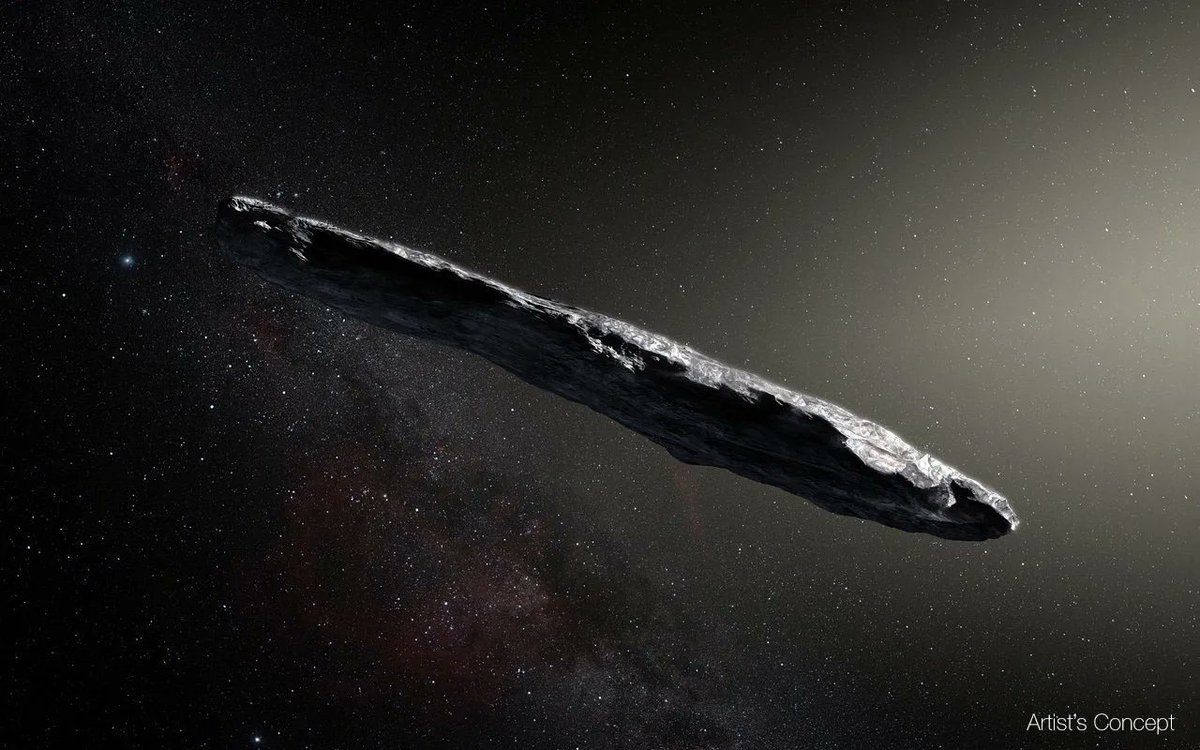

We finally have the technological means to detect interstellar objects. We’ve detected two in the last few years, ‘Oumuamua and 2I/Borisov, and there are undoubtedly more out there. As such, there’s been a lot of interest in developing a mission that could visit one once we detect it. But what would such a mission look like? Now, a draft paper from a team of primarily American scientists has taken a stab at answering that question and moved us one step closer to launching such a mission.
Part of what makes an interstellar visitor mission interesting is that interstellar visitors are so weird. Borisov acted like a typical comet once it entered the solar system, but ‘Oumuamua was a different beast entirely.
It never developed a cometary tail, as many scientists expected it to. It also exhibited acceleration that didn’t seem to be accounted for by radiative or other means, leading some prominent scientists to claim it might have even been an alien probe.
The best way to combat such fanciful claims is to closely examine them. And to do that, we have to have a mission that can catch it. But first, we would have to see it, and astronomers are already working on that.
The Vera C Rubin Observatory Legacy Survey of Space and Time (LSST) will be able to detect somewhere between 1-10 interstellar objects about the same size as ‘Oumuamua every year, according to the author’s calculations. That’s plenty of opportunity to find the right candidate. But what criteria should that candidate meet?
Most importantly would be “where is it coming from?” While there isn’t a “best” angle for an interstellar object (ISO) to approach from, it does make a difference based on where we store the “interstellar interceptor” (ISI). According to the paper, the best place for that is most likely the Earth-Sun L2 Lagrange point.
It has more than one advantage – first, there’s very little fuel needed to stay on station, and any ISI might need to stay waiting in storage mode for years. Once it is called into action, it has to react quickly, and another resident of L2 could help it do so.
NASA’s Time-domain Spectroscopic Observatory (TSO) is a 1.5-m telescope planned to locate at the L2 Lagrange point, along with more famous telescopes like the JWST. For all its amazing ability to capture spectacular images, JWST has a significant weakness – it is slow. It can take 2-5 days to focus on a specific object, making it useless when tracking ISOs. TSO, on the other hand, only takes a few minutes.
It could be supplemented by another telescope, the planned Near Earth Object Surveyor, which is intended to reside at the L1 Lagrange point of the Earth-Moon system. When combined with the TSO, these two quick-reacting telescopes should be able to capture images of any ISO that enters the inner solar system that isn’t directly on a trajectory along the L1-L2 baseline.
Once detected, getting to the ISO is the next task. Some will, unfortunately, just be out of reach from an orbital mechanics standpoint. But the authors calculate that there is an 85% chance that an ISI stored at L2 will be able to find a suitable object of interest that is the size of ‘Oumuamua within ten years. So, in essence, once we’re able to detect ISOs, it is just a matter of patiently waiting for the right opportunity.
Once the ISI reaches the ISO, it can then begin close-quarters observation, including a full spectroscopic map of both natural and artificial materials, which might help settle the debate about whether such objects are alien-made probes. It could also monitor for any outgassing that could explain the mysterious forces acting on ‘Oumuamua.
There are undoubtedly plenty more exciting things that scientists would like to understand about the first interstellar object we visit. But from the calculations in this paper, there will be plenty of opportunities to do so and plenty of data to collect when we do. Time to get on to the planning stages, then!
Learn More:
Siraj et. al – Physical Considerations for an Intercept Mission to a 1I/’Oumuamua-like Interstellar Object
UT – Upcoming Missions Could Search for Ancient Alien Technology Within the Solar System
UT – Vera Rubin Observatory Should Find 5 Interstellar Objects a Year, Many of Which we Could Chase Down With Spacecraft
UT – Extrasolar Object Interceptor Would be Able to Chase Down the Next Oumuamua or Borisov and Actually Return a Sample
Lead Image:
Artist’s conception of ‘Oumuamua.
Credit – M. Kornmesser/ESO/NASA
How can we explore Saturn’s moon, Enceladus, to include its surface and subsurface ocean, with…
Have you ever wondered how astronomers manage to map out the Milky Way when it's…
NASA astronomers have been continuing to monitor the trajectory of asteroid 2024 YR4. The initial…
Some exoplanets have characteristics totally alien to our Solar System. Hot Jupiters are one such…
Stars form in Giant Molecular Clouds (GMCs), vast clouds of mostly hydrogen that can span…
Let’s dive into one of those cosmic curiosities that's bound to blow your mind: how…